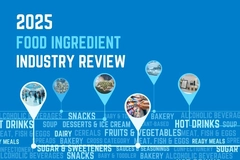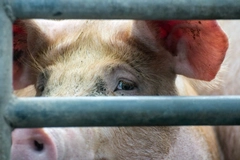
- Industry news
Industry news
- Category news
Category news
- Reports
- Key trends
- Multimedia
- Journal
- Events
- Suppliers
- Home
- Industry news
Industry news
- Category news
Category news
- Reports
- Key trends
- Multimedia
- Events
- Suppliers
Fighting food waste gives F&B businesses a good return on investments, flag experts

22 Nov 2022 --- As the climate crisis debate begins to simmer following two weeks of COP27, some in the F&B industry are turning their attention once again to the gigantic challenges of combating food waste, as part of keeping the planet cooler and cutting farm-to-fork losses. They signal how good this is for companies finances as well as reputation while being a beneficial, cost-saving method for consumers during the global economical crisis.
With new data and advice coming from a variety of experts in the field of food waste, it’s becoming increasingly clear that addressing the mammoth issue is not just a good moral choice; it makes great business sense.

Everyone profits from sustainability
Toine Timmermans, director of Wageningen University & Research and Food Waste Free United, drew the bottom line. Quoting data from the FAO Food Wastage Footprint report, he tells FoodIngredientsFirst, “The current bill of food waste for the producer is US$750 billion every year.”
Such a staggering number stands out even without taking climate change and sustainability into account. However, Timmermans is quick to point out that addressing the broad issue of food waste and loss makes financial sense for any producer.
“The biggest collective problem is the lack of urgency around the topic,” he says, although he notes that corporations are putting their money where their mouth is. “In the US private investors are standing in-line to invest millions in innovative start-ups with solutions to reduce food waste,” he says.
Citing data from ‘the business case’ of Champions 12.3, Timmermans continues, “An analysis of 700 companies in 17 countries found that investing in food loss and waste reduction yielded a 14-fold return.” “Also, reducing food loss and waste improves relationships with customers, vendors and stakeholders.”
Deepak Rajmohan, CEO of waste minimization start-up GreenPod Labs, agrees that making sustainability enticing is the way forward, telling FoodIngredientsFirst that the solution is “Bringing in policies to incentivize businesses/ industries and end-consumer to reduce food waste.”
 Food waste is a global problem, with massive losses occurring from farm to fork leaving producers holding the bill.Losses in the field
Food waste is a global problem, with massive losses occurring from farm to fork leaving producers holding the bill.Losses in the field
The main causal factor of food waste and loss lies in the failures of post-harvest systems. Food chain systems show systemic and frequent failures across the board, leading to massive losses.
Speaking to FoodIngredientsFirst, Caroline Cotto, co-founder of food upcycling company Renewal Mill which create ingredients from industrial byproducts, talks about making better use of otherwise discarded ingredients.
“Over the last 50 years the food industry has become, frankly, lazy and is leaving money and resources on the table,” flags Cotto.
“We've already seen so much progress over the last six years since we started Renewal Mill. Upcycled food has risen to be a top trend in the CPG food industry, and Upcycled Certified products are currently projected to prevent 934 million lbs of food waste per year,” she says.
Sofia Kourmpetli, senior lecturer in plant sciences at Cranfield University explains how post-harvest loses also include waste that can occur in transportation and storage.
“The majority of products require storage or maintenance in cold temperatures (the cold chain), something that is not always possible in many parts of the developing world, but also requires high energy inputs,” she tells FoodIngredientsFirst.
If post-harvest system failure is the main driver of massive loss, Kourmpetli stresses that lack of investment in this area has precipitated this slow disaster.
“Continuous underinvestment in postharvest research and human capital in this area has left us relatively unprepared to deal with the problem of the magnitude we are now facing.” she stresses.
The FAO, meanwhile, insists improving supply chains as part of the food waste war, is in hand.
Rosa Rolle, leader of the Food Loss and Waste team at the FAO.
“FAOs’ work is focused on building stakeholder capacities to manage quality across the supply chain, toward supplying quality food to target markets,” says Rosa Rolle, leader of the Food Loss and Waste team at the FAO
The data behind food waste
The true extent of food loss and waste, and the concurrent impact, have floored government, industry and consumers alike.
Rolle presents alarming data. “According to UN Environment, an estimated 17% of food is wasted globally,” she said. “11% of that food is wasted in households and ends up rotting in landfills instead of nourishing people.” Spoilage, refrigeration, transport, staffing, climate change, war: producers work to plug leaks in their food chains.
Spoilage, refrigeration, transport, staffing, climate change, war: producers work to plug leaks in their food chains.
Charis Galanakis, director of the Food Waste Recovery Group, put these percentages into sobering numbers. “Every year, one-third of the food produced globally is lost or wasted. This accounts for more than 1.3 billion tons of food.” he tells FoodIngredientsFirst.
These billions of tons translate directly into massive financial loss for both industry and consumer.
What can be done?
Immediate efforts and strategies to combat the food waste issue have largely placed the onus on the consumer, although producers are feeling increased pressure to minimize their food waste and make sure they communicate this with the outside world.
Dr. Christopher Simmons, department chair of Food Science and Technology at UC Davis, outlined the ideal solution to FoodIngredientsFirst.
“A zero food waste world would embody a robust bio-based economy where the vast spectrum of food wastes can be routed into optimized recycling pathways that transform waste into value-added products based on the unique properties of each waste stream.”
Kim Taylor, CMO of sustainability start-up Seenons, built on this vision. “A waste-free world is a closed-loop system as part of a circular economy. The system focuses on sustainability and is based on collaboration and transparency, and is supported by legislation.” she says.
Companies are indeed adopting new materials, with 2022 showing an uptick in packaging designed to fight food waste.
Top Packaging Trends 2022: “Food Waste Fighters” combat climate, pandemic and political crises (packaginginsights.com)
Renewal Mill have, for example, upcycled okara flour and oat protein, and Upcycled Food is pioneering its Supergrain+ sourdough system, alongside upcycled arabica coffee leaves and cacao fruit syrup.
Upcycled Food has also partnered with nutrition innovators Kerry to develop an upcycled protein crisp, which adds texture and nutrition to products in a sustainable manner.
Kerry allies with Upcycled Foods to deliver innovation in the sustainable food products category.
Reduction and minimization of loss proves the most popular and profitable solution, and although companies themselves are leading the way in sustainable investments, debate still rages over potential use of waste as a resource in and of itself.
 A zero-waste future is looking to also be the most profitable of futures for the industry.Biofuels running on fumes
A zero-waste future is looking to also be the most profitable of futures for the industry.Biofuels running on fumes
Reduction and minimization of loss proves the most popular and profitable solution, and although companies themselves are leading the way in sustainable investments, debate still rages over potential use of waste as a resource in and of itself.
On paper, utilizing waste as a biofuel seems an elegant solution; turning loss into gain, recouping lost profits and providing sustainable fuels.
Galanakis feels that food waste is an untapped resource with vast potential, even beyond biofuel use. “Food waste comprises biomass with potential high value that can be converted to biopolymers, food additives, packaging materials, and textile coatings.” he adds.
Simmons agrees. “There is a lot of potential for food waste biomass owing to the high content of nutrients and chemical energy,” he says. “Food waste can potentially be converted to animal feed, fuel, compost, bioplastics, antimicrobials, nutraceuticals, or chemical precursors for other valuable products.”
However, there’s just as much pushback. Timmermans points out that biofuel marks a failure of the system. “Only unavoidable food waste can be used as a source for bioenergy and fertilizer.” he notes. “It is still a waste of all the resources, land, water and other inputs.”
“Although it is good to develop solution for the utilization of the waste we generate, we should still be putting more of our efforts in reducing the amount of food waste we generate.” stress Kourmpetli.
The debate continues, with battle lines over the biofuel debate being drawn.
In the end, it seems that producers, consumers and governments are coming to accept and embrace an economic model that works to maximize sustainability, and, as a result, profit.
Galankis rounded it up. “We need a more sustainable production model and a shift from a linear economy to a climate-neutral economy, particularly a circular and transformative bioeconomy.” he concluded.
By James Davies










